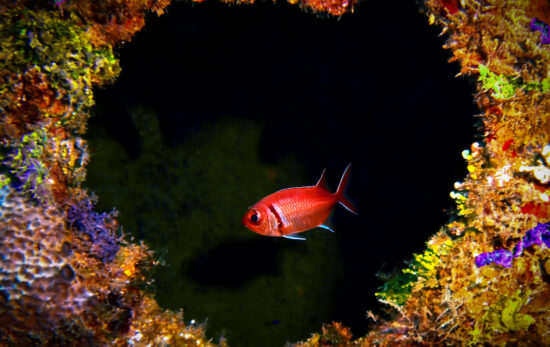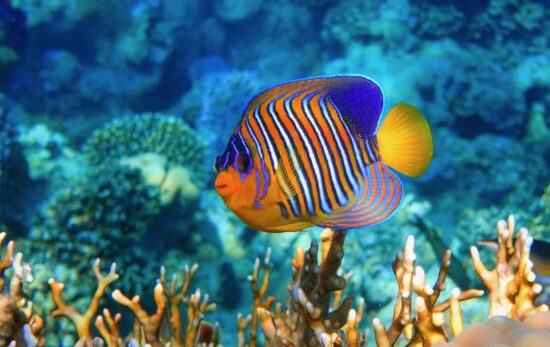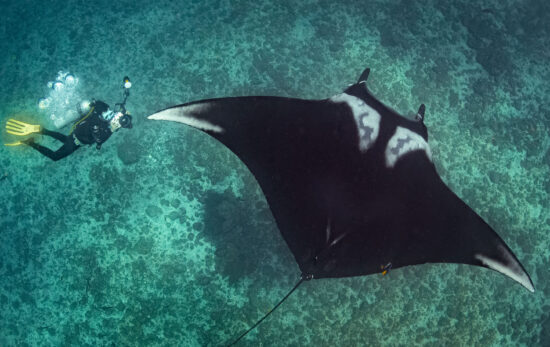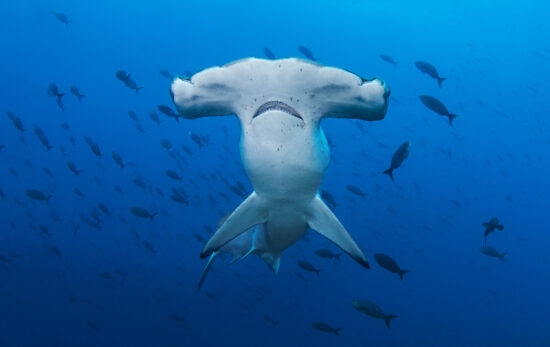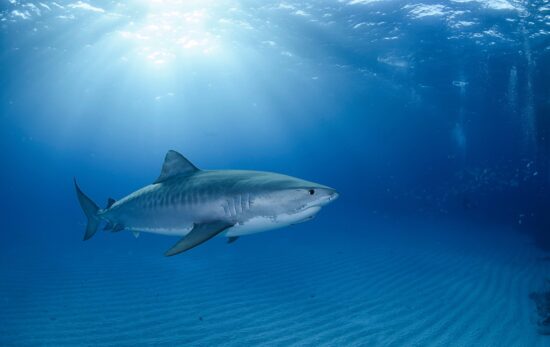Often referred to as the real-life Godzilla, marine iguanas are a true marvel of evolution. Found in the Galápagos Islands, marine iguanas have adapted uniquely to a life both on land and in the ocean. Divers and wildlife enthusiasts are captivated by the reptiles’ impressive swimming abilities and their striking appearance. In this blog, we’ll dive into some fun facts about the marine iguana and show you why they might just be the reason you’ll want to grab a mask and snorkel or become a certified scuba diver!

1. Marine Iguanas Are Ocean Grazers
Marine iguanas are known to be ocean grazers, due to their unique adaptations for underwater feeding. They dive as deep as 30 feet (9 meters) to feed on marine algae. They use their strong, clawed feet to cling to rocks while scraping algae off with their teeth. Their streamlined bodies and powerful tails help them move effortlessly through the water. Thanks to this, marine iguanas don’t need perfect dive conditions to get their meal in!
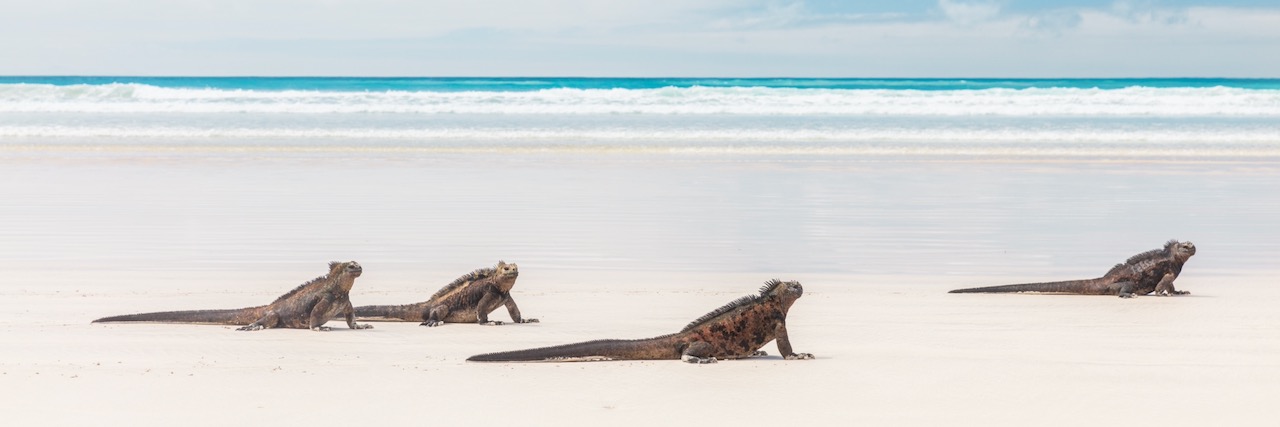
2. They Are Sun-Seekers
After searching for food and diving in the cold waters of the Galápagos, these iguanas climb onto nearby lava rocks to bask in the sun. They use their dark, rough scales to absorb sunlight, which is crucial for raising their body temperature. This act of sunbathing helps them regulate their cold-blooded metabolism, providing the warmth needed for digestion and overall energy.
Many divers and wildlife photographers love their ‘sunbathing display’, so be sure to have your cameras ready. That being said, it’s always important to keep a safe distance and make sure you’re not disturbing the animal.

3. Their Sneezes Are Salty
Better watch out! Marine iguanas have a very interesting way of dealing with the salt they ingest while feeding underwater. Since these reptiles don’t have a way to filter out salt before it enters their bodies, they have come up with a way to get rid of it. They do so by sneezing! Marine iguanas can sneeze out the salt by using special glands near their nostrils. These glands filter the salt from their blood and help the iguana balance their salt levels. If you happen to be around them, just make sure you’re not in the ‘splash zone’!

5. Marine Iguanas Can Display Dazzling Colors
During the breeding season, which typically occurs between January and March, male marine iguanas undergo a must-see transformation. Their usually dark skin takes on a spectrum of vivid colors to catch the attention of females. The more intense and vibrant the colors, the more attractive the male appears to potential mates. Not only do they attract females this way, but they use these colors to ward off other male rivals. The iguanas’ colors mixed with the black volcanic rock and blue waters of the Galápagos is a sight worth seeing, especially for wildlife and ocean lovers.

6. Marine Iguanas Have Existed for Millions of Years
For anyone interested in prehistoric life, seeing marine iguanas is like taking a step back in time. They have been around for millions of years and can thrive in very unique habitats when compared to other modern day reptiles. Marine iguanas are basically mini underwater dinosaurs that have successfully made the ocean their home. Who wouldn’t want to have the chance to meet them face-to-face?
Unfortunately, the population of marine iguanas is vulnerable to extinction. Protecting them is crucial because they play a vital role in the ecosystem of the Galápagos. Marine iguanas are the only lizards in the world that can forage in the ocean, helping to maintain healthy algae levels. As Ocean Torchbearers™, it is our job to help safeguard their habitats and support conservation efforts.

Meet The Real Life Godzilla
As a certified scuba diver, you can witness these incredible animals of the Galápagos. Divers have the ability to see how marine iguanas explore and navigate the underwater world firsthand. Everything from feeding on algae to seeking warmth in the sun after a dip in the ocean. Watching them dive, swim, and interact in their marine environment is a once-in-a-lifetime experience. Let’s not forget that these reptiles also allow us to go back in time. Turn off that documentary and experience it for yourself!
With PADI courses, you’ll gain the skills and confidence needed to embark on incredible underwater journeys. Start today and open the door to experiences that connect you with the rich history and biodiversity of our blue planet.

